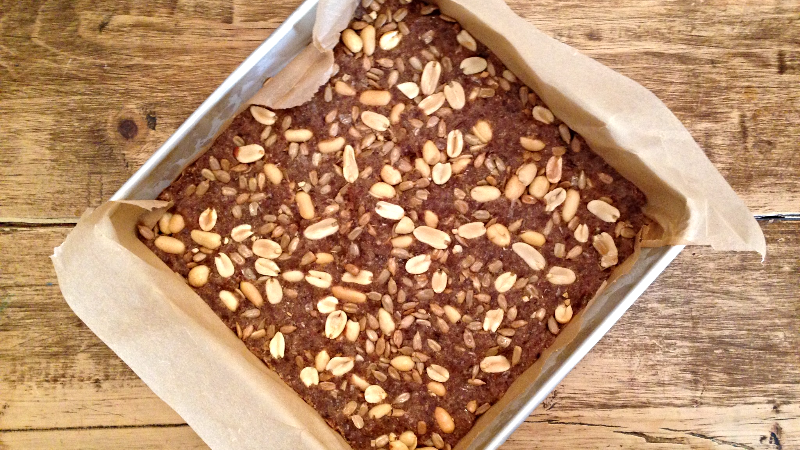part 2 in a series on the theory and practice of exceptional energy bars
Demanding Design
Durable, dense energy: these are the characteristics of a functional energy bar. Simple enough? If you’ve baked or bought one, you might agree it’s not so. Store-bought bars have their advantages—they’re rigorously engineered for resilience and deliciousness. And for profit: whatever they claim on the wrapper, industrial bars invariably fall on a continuum of nutritional depletion and astronomical cost. Homemade bars are rarely an acceptable alternative, performing pitifully in the kitchen (innumerable operations with epic ingredients lists) and in the field (crumbling, squashing, or melting by the first switchback).
What’s the issue? These goals, durability and energy density, are multifaceted objectives that necessitate a more nuanced understanding specific requirements. Durability entails both tangible structural robustness and procedural resilience in the grocery, pantry, and kitchen. Energy density relates to both nutritional value and economy of effort and expense.
An optimal bar must address this entire collection considerations. Fortunately, they can all be satisfied with another, more actionable pair of guiding principles.
1. Whole ingredients
Construct your bars without liquids, flours, or anything otherwise processed. Why?

Nutritional superiority
There are countless conflicting dietary regimens, but whichever you subscribe to, I’ll bet it favors whole foods. So constraining our recipes guarantees omission of processed ingredients and forces preferable substitutions. For example, whether or not you avoid wheat flour, you’ll surely agree that rolled oats are a superior alternative. Dates improve on sugar or honey; nuts surpass oil and protein powder.
Enforced simplicity
Every recipe has two sections: ingredients and procedures. Work exclusively with whole foods, and you streamline both in a single. Ingredients: fewer of them, and what’s left is more portable and resilient.1 Procedures: solid components lend themselves more easily and reliably to solid results. Introduce liquids or flours and you’ll be forced to balance them precisely for an equally tasty and robust outcome. (That’s called Baking, and this is not the time.)
2. Structural engineering
Channel your inner civil, mechanical, and operations engineer. How?
Concrete composition

If you want a bar that holds together like concrete, build it like concrete. The famously durable building material consists of aggregate (gravel) embedded in a binder (cement). Our bars achieve structural soundness with the same combination of components. (Same in function, not in flavor. No building materials in the kitchen, please.)
Thermal cycling

Many bars—ours included—require baking to solidify. This isn’t news, but the details matter: bake slow and low to ensure uniform heating and avoid structure-compromising rising. Complete cooling is just as important, if more frequently overlooked. Our recipes are concise enough that it stands out as an essential step, not an annoying addendum.
Mechanical processing
Typically, the greatest structural demands are placed at a bar’s birth. Ease the transition by using an advantageous aspect ratio: form a relatively deep bar in a relatively small sheet. Use a physical barrier between bar and baking sheet: parchment2 beats butter. Turn out with full support, rather than lifting from the sides. And be ready to carve with either serrated sawing or chef’s-knife shearing.


